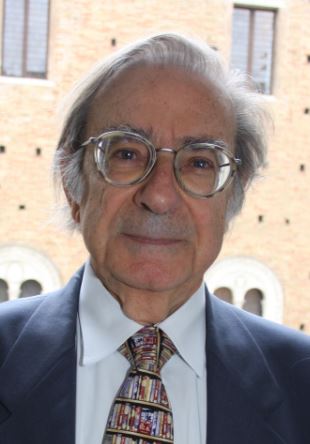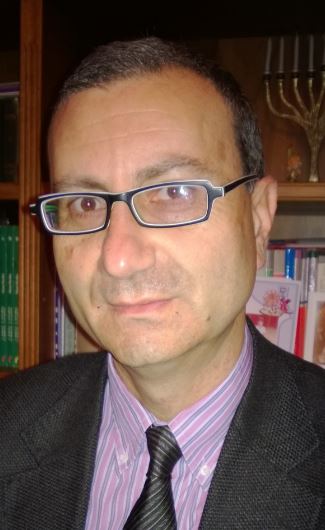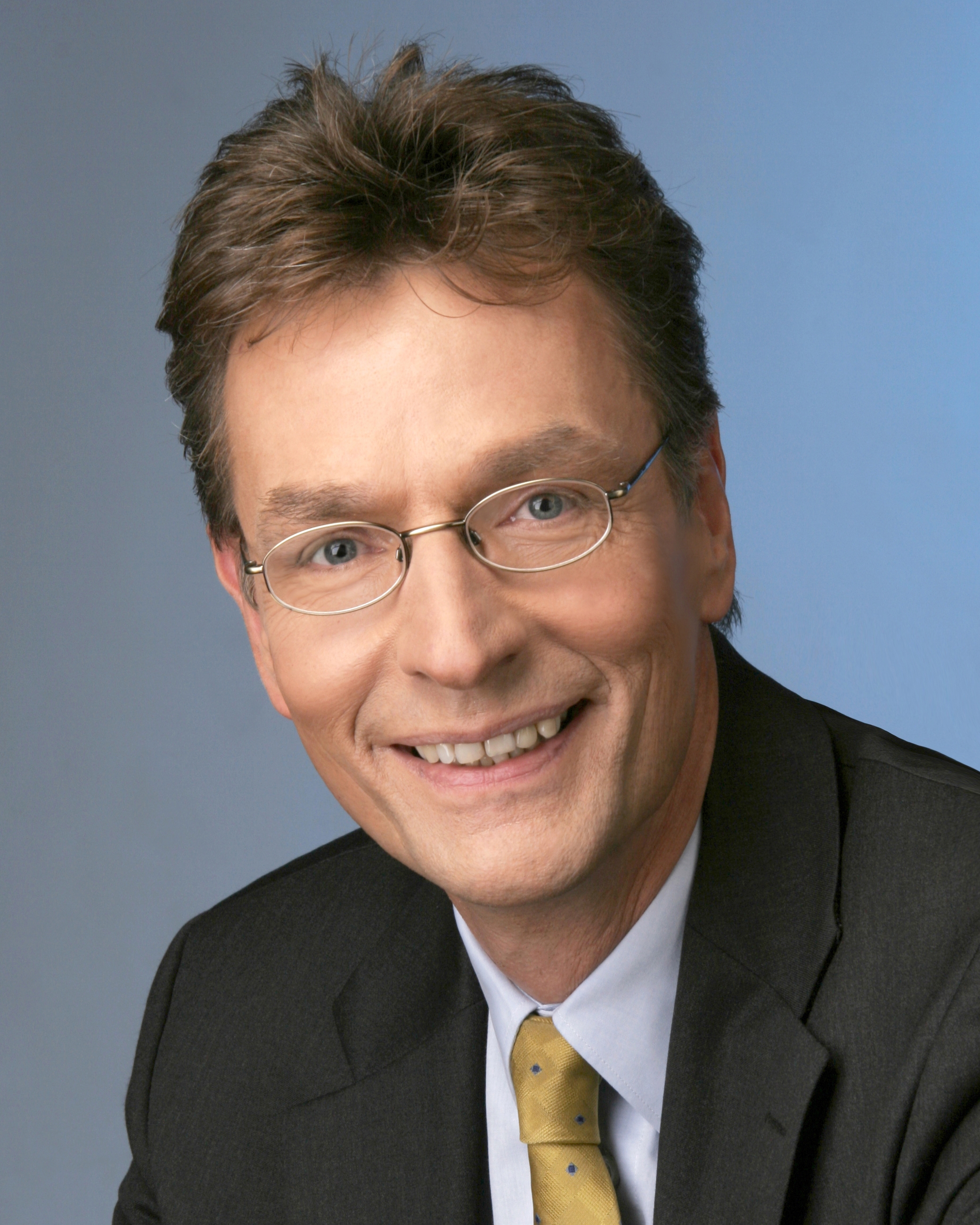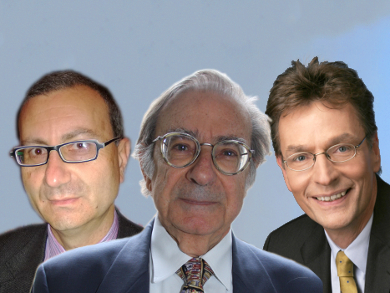Dr. David Peralta and Dr. Scott Williams from the journal ChemMedChem, have interviewed their former and present editorial board chairmen, Professor Giorgio Tarzia, Professor Antonello Mai, and Professor Rainer Metternich, to share their thoughts on the journal as well as where they think the field of medicinal chemistry is headed. ChemMedChem celebrates its 10th anniversary, and takes the opportunity to look back at the journal’s past and also at how medicinal chemistry has progressed through the years.
Giorgio Tarzia, University of Urbino, Italy, was the last serving Editor-in-Chief of Il Farmaco. The journal converted into ChemMedChem in 2005. Tarzia was chairman of ChemMedChem‘s Editorial Board until 2015. Antonello Mai, Sapienza University of Rome, Italy, and Rainer Metternich, formerly F. Hoffmann-LaRoche, Basel, Germany, are currently Chairmen of the Editorial Board of ChemMedChem.
Research
What are your main areas of research interest, and how did you become interested in them?
Giorgio Tarzia: My latest research was in the area of endocannabinoids (cannabinoids produced by the body) and mainly in the inhibition of the central and peripheral fatty acid amide hydrolase (FAAH) which inactivates anandamide, an endocannabinoid with mood-regulating and analgesic properties. My interest in the area of nonclassical cannabinoid ligands was longstanding but not very successful until in 2000, in Madrid, Spain, I chanced to meet Professor Daniele Piomelli, then from the University of California, San Diego, USA, a pioneer pharmacologist of endocannabinoids.
At the time the area was largely unexplored and very promising from scientific and practical points of view. Quickly, I decided to shift from nonclassical cannabinoids to FAAH inhibitors, and Professor Piomelli and I started a fruitful collaboration also involving Professor Marco Mor, University of Parma, Italy, and the respective groups, in my case Drs. A. Duranti, B. Di Giacomo, and A. Tontini. The first results were published in January 2003 [1] followed by a number of publications and patents over the years.
Antonello, please describe your main areas of medicinal chemistry research.
Antonello Mai: Since almost 20 years I am working in design, synthesis, and biological validation of small-molecule modulators of epigenetic targets. These are proteins and/or enzymes involved in chromatin remodeling and in control of gene expression.
How did you become interested in this?
Antonello Mai: I started my work in medicinal chemistry in academia in 1986 with research aimed to identify new antimicrobial agents—from antibacterial to antifungal and antiviral agents. The common chemical theme of my studies was the presence of pyrrole in newly designed molecules. Indeed, pyrrole was poorly studied at that time from both the chemical and medicinal chemistry points of view, and few drugs contained the pyrrole nucleus. Thus, it was simpler to identify novel biologically active structures by introducing the pyrrole moiety.
After trichostatin A (TSA) had been described as a natural product with antifungal properties, we designed and prepared some pyrrole-based analogues of TSA and tested them for potential antimicrobial properties. Such compounds did not show interesting chemotherapeutic activities in those studies. Nevertheless, after recognition of TSA as anticancer agent and inhibitor of histone deacetylases (HDACs) – a family of enzymes catalyzing the removal of acetly groups by acetyllysine residues in histones and leading to the condensed form of chromatin (heterochromatin) which cannot be processed – these compounds were used for structure-based drug design [2].
Rainer, please describe your main areas of medicinal chemistry research.
Rainer Metternich: First, epigenetic targets in oncology and neurodegenerative diseases: The aim is to identify novel, selective and safe gene-expression modifiers.
Second, phenotypic discovery as a complementary approach to target-based approaches: The aim is to identify disease-relevant targets early on within a research program via more holistic screening approaches, e.g., stem cells, using tool compounds which themselves can become promising starting points for further lead generation/optimization.
How did you become interested in this?
Rainer Metternich: Regarding the first topic, epigenetic targets, the completion of the human genome project and the subsequent understanding that control of gene expression via epigenetic markers is highly critical for disease development provided me with a convincing rationale to address these markers with medicinal chemistry approaches in order to achieve causative/preventive rather than symptomatic therapies.
In addition, discussions with opinion leaders in the epigenetic field, Danny Reinberg from Howard Hughes Medical Institute, New York University (NYU) and C. David Allis from The Rockefeller University, New York, NY, USA, were key and provided me with the necessary confidence to go for epigenetic targets.
Regarding the second topic (phenotypic discovery), my interest was stimulated by a too high late-stage clinical failure rate in many indication areas due to insufficient efficacy and unwanted side effects, and by the wish to identify disease-relevant targets with a higher probability of success via phenotypic (physiological) approaches. This has to be seen as a complementary approach to target-based drug discovery, which in the past has definitely demonstrated its merits but has also shown its limitations.
Future Development
How has medicinal chemistry changed over the course of your career?
Giorgio Tarzia: Medicinal chemistry as it is practiced today has only a distant relationship with what it was at the start of my career. Chemical and pharmacological techniques were much slower and less sophisticated than those of today, emphasis was on animal tests, synthesis was done at the gram scale, and NMR spectroscopy and mass spectrometry were in their infancy. However, the absolute must to advance the frontiers of knowledge was there and has remained unchanged.
Antonello Mai: Medicinal chemistry became indeed very different from what it was 20–25 years ago. Before, it was centered on the chemical synthesis of drugs and their structure–activity relationship. Now, after huge developments in molecular biology, cell biology, chemical biology, structural biology, biochemistry, genetics and bioinformatics, modern medicinal chemistry is a multidisciplinary science in which all the above fields contribute, coexist, and synergize with each other, leading to a rational process for drug discovery. I imagine that this modern concept for medicinal chemistry will be even stronger in the next ten years.
Rainer Metternich: As he says, medicinal chemistry has become more interdisciplinary. As one of the key outcome of this, the early assessment of both, the quality of a given target regarding its drugability and disease-relevance, and the quality of compounds regarding their druglikeness, have become center points in modern medicinal chemistry.
How do you think medicinal chemistry will change in the next ten years?
Rainer Metternich: There will be an increased focus on the effective use of knowledge and methodology in the small-molecule and biologics areas and combining these two modalities, e.g., antibody–drug conjugates (ADCs), in order to address unsolved delivery and efficacy/toxicology issues of current and new therapeutic strategies more effectively.
The design and synthesis of molecular probes and tools for chemo-proteomic approaches, which pharmacologists will use to describe disease pathways and new drug targets evolving from epigenetic research and phenotypic discovery, will become a standard repertoire in these research fields.
We will see the field of epigenetics with the design and synthesis of selective gene expression modifiers rapidly moving. Thus, medicinal chemists will need to broaden their scientific horizons in order to cope with the pace of new developments in this particular area, which are of great relevance for all indication areas.
In addition, interdisciplinary approaches will become even more critical in order to succeed in these challenging and complex research fields, as is already the case now.
Antonello Mai: During the 20 years of my research career, the field of epigenetic small-molecule modulators (epi-drugs) has been greatly enhanced. For example, there was a boom in research in the HDAC field between 2000 and 2010. Many HDAC inhibitors, with different degrees of potency and/or selectivity, have been reported to date, but much is still to dissect about the role of specific HDAC isoforms in many physiological and pathological conditions. Many different epi-targets have been described and many molecules have been designed and tested against these targets. Nevertheless, some epi-targets remain poorly investigated such as DNA methyltransferases, histone acetyltransferases, methyl readers. Thus I expect great efforts by medicinal chemists in this direction for the next ten years.
HDAC inhibitors, which are very potent and selective in cancer cells as antiproliferative, apoptotic, and differentiating agents, failed in vivo for complete eradication of tumors. Therefore, the main hope now is to use them in combination therapy with other chemotherapeutic agents. Exploration of such combined therapies will be in my opinion the future of cancer therapy.
What do you hope or expect to see over the next ten years in terms of advancements in the medicinal chemistry field?
Rainer Metternich: I hope to see even more progress in addressing in vivo efficacy very early on within a research program, e.g., by developing and using more holistic screening approaches, such as stem cells, disease-like cell types, or even in vivo applied pharmacology approaches.
I hope to see more investments into the generation of high-quality, drug-like chemical libraries, such as the very recently published Chemistry Informer Library from Merck & Co., in order to address drug-likeness right from the beginning of drug discovery activities and to enable the discovery and development of drug-like molecules more effectively.
Publishing
Italy has a particularly strong presence in the field of medicinal chemistry, with many medicinal chemists across Italian universities, government institutions, and private-sector laboratories. Giorgio, why do you think this is?
Giorgio Tarzia: In most countries, chemists—usually organic chemists—grow into medicinal chemistry by practicing it in an academic or industrial environment. Very early, some Italian academicians proposed to the Italian Ministry of University and Research (Ministero Italiano per le Università e la Ricerca, MIUR) to establish a degree in medicinal chemistry (Chimica e Tecnologie Farmaceutiche, CTF) to better answer the need for trained medicinal chemists from the Italian pharmaceutical industry and academia. The first CTF courses started in 1969 within the faculties of pharmacy. They were well received by private and governmental institutions, which explains the widespread presence of medicinal chemists.
In 2006 ChemMedChem replaced Il Farmaco, the Italian Chemical Society’s medicinal chemistry journal. From your perspective as a researcher, how did this affect you and your colleagues? How did this affect you in your capacity as a journal editor/editorial board member?
Giorgio Tarzia: Ending Il Farmaco by launching ChemMedChem was the necessary answer to the request of Italian medicinal chemists for a journal with a larger and more qualified audience. The cessation of Il Farmaco was a decision that was emotionally difficult for some of us, certainly for me, but clearly necessary and positive in stimulating good research.
As the last editor of Il Farmaco, I had accepted the role because I thought that the problems the journal was facing could and should be overcome. The journal was founded by Pietro Pratesi in 1945—not exactly a happy and easy time. The facts proved me wrong and I failed, but I am glad I tried. I brought into ChemMedChem the same willingness to help build a high-quality medicinal chemistry journal and, although with a minor role, I am glad I had some part in its success.
What was the most rewarding and fulfilling of your role as Editor of Il Farmaco?
Giorgio Tarzia: Most important for me was the perception – the illusion perhaps – that by improving the quality of Il Farmaco, I was improving, albeit to a very small extent, the quality of published research. Personally I worked a lot, learned a lot, did what I could, and now that the matter has come to an end, I believe that for me it was worth fighting for Il Farmaco even if I knew from the very beginning that it was going to be a losing battle.
What do you like/dislike about the current state of affairs in scientific publishing?
Rainer Metternich: I very much like that there is an increased focus on ensuring high quality and reproducibility of published work in science, and that this critical aspect is really driven and proactively addressed by editors. See, for example, the recent Editorial by ChemMedChem’s former Editor-in-Chief, Natalia Ortúzar [3].
Giorgio Tarzia: I wonder if the proliferation of journals is a positive or a negative aspect of present publishing policies. A newly established and growing field needs a dedicated journal, and this is good. But sometimes the need of the new journals to survive leads to a flattening of the quality of the published material, and this is bad. I am especially critical of journals dedicated to review articles, written sometimes by people who only contribute marginally to the reviewed area.
Rainer Metternich: Generally, I see that social media will continue to be of high relevance and usage within our society. In principle, it’s very positive that more or less everybody has access to these media, e.g., blogs, social networks, social bookmarks, etc.
On the downside, I can see that there is no or very little control over the quality of what gets published via social media. Contrary to “classical” scientific publishing where a published article cannot be changed after publication, results/data published via social media can always be changed after publication.
Antonello Mai: I don’t like social media so much, and I do not take part in them. I prefer to maintain my privacy as much as possible. About medicinal chemistry journals, I think we have excellent examples of them as well as less brilliant ones. All this is in part refelcted by their impact factors (IFs).
In terms of scientific publishing, what do you hope to see over the next ten years? What do you hope not to see?
Rainer Metternich: I hope to see that authors and reviewers fully buy into the goal of ensuring publication of high quality research which can be reproduced. I hope not to see a relaxation of quality standards in scientific publishing.
Antonello Mai: I hope to see scientific publishing move towards open access, especially for publications from European projects, in which publishing open access is mandatory.
I do hope not to see scientific publishing in open access journals essentially without peer review, or the increased strength of lobbies in famous, high-IF journals that keeps scientists “without proper connections” from getting published.
Advice
What advice or words of wisdom would you give to young medicinal chemists who are starting their own independent research careers?
Rainer Metternich: Go for the high-hanging fruits in areas including so-called rare diseases with high medical need; always aim for innovation with breakthrough potential; do always have drugability for targets and drug-likeness for compounds in the back of your mind; listen carefully to and collaborate and communicate/share data effectively with all scientific disciplines within your research program.
Giorgio Tarzia: I hope young researchers will be capable of leaving an area of research before results start becoming routine. Logistics is important but follows behind. Publishing is important and necessary for survival but doing good science is a must.
Antonello Mai: Passion, curiosity, fantasy, huge study, rigor and exactitude. To think that one is never at the end of a work, a discovery or a process, but that there is always something more, beyond.
Thank you very much for the interview.
References
[1] Satish Kathuria, Silvana Gaetani, Darren Fegley, Fernando Valiño, Andrea Duranti, Andrea Tontini, Marco Mor, Giorgio Tarzia, Giovanna La Rana, Antonio Calignano, Arcangela Giustino, Maria Tattoli, Maura Palmery, Vincenzo Cuomo, Daniele Piomelli, Modulation of Anxiety through Blockade of Anandamide Hydrolysis, Nat. Med. 2002, 9, 76–81. DOI:10.1038/nm803
[2] A. Mai, S. Massa, D. Rotili, I. Cerbara, S. Valente, R. Pezzi, S. Simeoni, R. Rago, Histone Deacetylation in Epigenetics: An Attractive Target for Anticancer Therapy, Med. Res. Rev. 2005, 25, 261–309. DOI: 10.1002/med.20024
[3] Scott D. Williams, Natalia Ortúzar, A Decade of ChemMedChem, ChemMedChem 2016, 11(1), 3–5. DOI: 10.1002/cmdc.201500548
 |
Giorgio Tarzia, born 1939, studied at the University of Rome, Italy, and earned his Ph.D. there in 1963. After postdoctoral work at the same university, from 1966–1967, he worked at Syntex Research Institute-Palo Alto, CA, USA, and from 1967–1969 at the Research Institute for Medicine and Chemistry, Cambridge, MS, USA. From 1969–1988, he was Director of the Medicinal Chemistry Department, Dow-Lepetit, Milan, Italy, and from 1989–1994, Director of the Departments of Medicinal, Analytical and Process Research Chemistry, Glaxo S.p.A., Verona, Italy. Tarzia became Full Professor of Medicinal Chemistry at the University of Urbino, Italy, in 1994. Among several awards, he was nominated ChemPubSoc Europe Fellow in 2005. |
|
 |
Antonello Mai, born 1962, studied at the Sapienza University of Rome, Italy, and earned his Ph.D. there in 1992. He worked at Sapienza – Università di Roma, Italy as researcher from 1992–1998 and as associate professor from 1998–2001. Since 2011, Mai is Full Professor at Sapienza University of Rome. Mai has been a member of the Executive Committee of the Medicinal Chemistry Division of the Italian Chemical Society (SCI) and of the Scientific Committee of the European School of Medicinal Chemistry (ESMEC). Since 2015, he is a member of the Executive Committee of the European Federation of Medicinal Chemistry. |
|
 |
Rainer Metternich, born in 1955, studied at the Philipps-University of Marburg, Germany, and earned his doctorate there in 1985. As a research assistant, he initially worked at Harvard University, Cambridge, MA, USA, and then moved into industry. First, at Sandoz Ltd. and later at Novartis International AG, he took senior positions conducting several research programs in Europe and the US. In 2000, he joined Schering AG, Berlin, Germany, where he was finally Executive Vice President responsible for Global Research. In 2007 he became Head of Basic Research and Site Head at Merck & Co. in West Point (PA), USA. Thereafter, he joined F. Hoffmann-La Roche in Basel, Switzerland, where he was Global Head of Small Molecule Research until 2013. Metternich is honorary professor at the Technical University of Berlin, Germany, and member of several Supervisory Boards and Scientific Advisory Boards, e.g., RIKEN, Japan, Max-Planck Innovation GmbH, Germany. |
